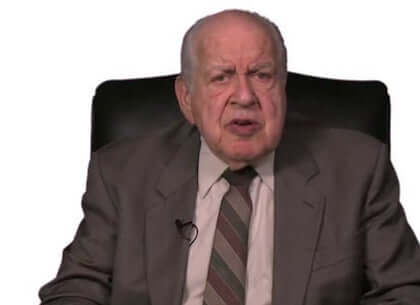The late Donald Zarda, a skydiving instructor whose estate won a landmark gay rights victory in his discrimination suit against Altitude Express. | FACEBOOK.COM
The Second Circuit Court of Appeals, with jurisdiction over federal cases from New York, Connecticut, and Vermont, ruled on February 26 that Title VII of the 1964 Civil Rights Act, which prohibits discrimination because of an individual’s sex, also makes it unlawful for employers to discriminate against a person because of their sexual orientation.
The ruling in Zarda v. Altitude Express was not unexpected, as the questions and comments of the judges during the oral argument held last September 26 suggested general agreement that it was time for the circuit to bring its case law in line with the evolving understanding that sexual orientation discrimination is a form of sex discrimination.
The Zarda ruling widens a split among federal appeals courts, with the Second Circuit joining the Chicago-based Seventh Circuit, which ruled the same way last spring in Hively v. Ivy Tech Community College, in departing from the consensus of all the other circuit courts previously addressing the issue. Although the Supreme Court recently refused to review a three-judge panel decision from the Atlanta-based 11th Circuit, Evans v. Georgia Regional Hospital, which had decided the other way, the Zarda ruling makes it more likely the high court will soon take up the issue, especially if an employer on the losing end petitions it to do so.
New York-based US appeals court says ’64 Civil Rights Act bars sexual orientation discrimination
The Zarda case dates from the summer of 2010, when Donald Zarda, an openly gay skydiving instructor, was fired by Altitude Express after a female customer’s boyfriend complained that Zarda had come out to her while preparing for a “tandem skydive” during which they would be strapped together.
Zarda complained to the Equal Employment Opportunity Commission (EEOC), the federal agency that oversees Title VII compliance, which at that time had not yet accepted the idea that sexual orientation claims qualified. Zarda asserted that he suffered discrimination because of his gender, complaining he was fired because he “honestly referred to [his] sexual orientation and did not conform to the straight male macho stereotype.”
The EEOC did not then take a position on his claim’s merits but issued a letter authorizing him to bring a lawsuit, which he did in New York’s Eastern District.
Zarda’s court complaint cited Title VII, alleging sex discrimination (including discrimination because of his failure to conform to gender stereotypes), and the New York Human Rights Law, which explicitly outlaws sexual orientation discrimination. The district court, following existing Second Circuit precedent, rejected his Title VII claim but allowed his state law claim to go to trial, where a jury ultimately ruled against him. By the time of the trial, Zarda, unfortunately, had died in a skydiving accident, but his estate maintained the suit.
In July 2015, the EEOC changed its view on the application of Title VII to sexual orientation discrimination, issuing a decision in a case brought by David Baldwin, a gay air traffic controller suing the US Transportation Department. The EEOC reasoned that when an employer discriminates based on a person’s sexual orientation, they are unlawfully taking account of the person’s sex. Zarda’s estate then sought reconsideration of its Title VII claim from the district court, but was turned down, and encountered the same rejection from a three-judge panel of the Second Circuit last spring.
In a another case also decided last spring, a different three-judge panel also relied on the Second Circuit precedent to reject a sexual orientation claim in Christiansen v. Omnicom Group, but, in a concurring opinion, the circuit’s chief judge, Robert Katzmann, taking note of the Hively ruling out of Chicago and the EEOC’s Baldwin decision, suggested the Second Circuit should reconsider its precedent in a rare “en banc” review by its full bench. The Zarda case, decided shortly after Christiansen, provided that opportunity.
The panel that heard arguments on September 26 included the circuit’s 11 active judges plus two senior judges, Robert Sack and Gerard Lynch, who were part of the original three-judge Zarda panel.
The 10 judges in the majority agreed with the proposition that individuals can bring a sexual orientation discrimination claim under Title VII, but only five judges agreed to base their decision on the three different theories that the EEOC and the Seventh Circuit had embraced in their decisions.
Judge Katzmann wrote what the court described as the “majority opinion,” essentially reiterating the analysis from his concurring opinion in Christiansen.
“Logically, because sexual orientation is a function of sex and sex is a protected characteristic under Title VII, it follows that sexual orientation is also protected,” he wrote explaining the first of three theoretical bases for the ruling, continuing that “because sexual orientation discrimination is a function of sex, and is comparable to sexual harassment, gender stereotyping, and other evils longs recognized as violating Title VII, the statute must prohibit it.”
Relying on the Supreme Court’s standard for deciding whether an employment practice is sex discrimination, Katzmann referred to the “comparative test,” which “determines whether the trait that is the basis for discrimination is a function of sex by asking whether an employee’s treatment would have been different ‘but for that person’s sex.’”
In the Hively case, the Seventh Circuit found that a lesbian college professor would not have been fired if she was attracted to men. “But for” her being a woman, her attraction to women would not have led to her discharge.
“We can therefore conclude that sexual orientation is a function of sex and, by extension, sexual orientation discrimination is a subset of sex discrimination,” Katzmann wrote.
The second theory backing up Katzmann’s conclusion involves gender stereotyping. “Specifically,” he wrote, “this framework demonstrates that sexual orientation discrimination is almost invariably rooted in stereotypes about men and women.”
Finally, Katzmann turned to the associational theory, noting that the Second Circuit accepted this theory in a 2008 race discrimination decision involving a white man who was discharged because he had married a black woman. The court there found this was discrimination because of both his race and the race of his wife and so violated Title VII. Applying that reasoning and quoting from the EEOC’s Baldwin decision, Katzmann wrote, “If a male employee married to a man is terminated because his employer disapproves of same-sex marriage, the employee has suffered associational discrimination based on his own sex because ‘the fact that the employee is a man instead of a woman motivated the employer’s discrimination against him.’”
Katzmann specifically rejected the argument that Congress’ repeated failure to add sexual orientation protections to federal law should defeat Zarda’s claim.
Zarda’s case is unusual in that the federal government filed amicus briefs and made arguments on both sides of the question. The EEOC filed a brief supporting the Zarda estate’s claim that Title VII covers sexual orientation claims, consistent with its ruling from the Obama administration in the Baldwin case, but the Justice Department filed a brief and participated in the oral argument on the other side, reflecting Attorney General Jeff Sessions’ position that Title VII does not cover sexual orientation or gender identity claims. A large portion of Katzmann’s opinion, which runs more than 65 pages, was devoted to refuting DOJ arguments.
Several of the concurring judges limited their agreement to the associational discrimination theory, finding it consistent with the circuit’s 2008 race discrimination case. Judge Dennis Jacobs went further, explaining why he was not convinced by Katzmann’s other theories, while Judge José Cabranes concurred without signing on to any of the other opinions, characterizing this as “a straightforward case of statutory construction.”
“Zarda’s sexual orientation is a function of his sex,” Cabranes wrote. “Discrimination against Zarda because of his sexual orientation therefore is discrimination because of his sex, and is prohibited by Title VII. That should be the end of the analysis.”
Judge Lynch’s dissenting opinion was actually longer than Katzmann’s majority opinion, providing a detailed history of Title VII’s enactment to support his agreement with Judge Diane Sykes, who dissented in the Seventh Circuit Hively case, that the court must confine its interpretation of Title VII to what the legislators thought they were enacting in 1964. The role of the court in statutory interpretation, Lynch and Sykes argue, is relatively modest, and does not extend to “updating” statutes to embrace new legal principles that are not clearly logical extensions of what the legislature intended to address. Lynch’s dissent was joined by Judges Debra Ann Livingston and Reena Raggi.
New York, Connecticut, and Vermont already have state laws banning workplace sexual orientation discrimination, but Title VII can provide a broader range of protection than the state laws. At the Zarda trial, the judge gave a jury charge that required finding that Zarda’s sexual orientation was the motivating factor in his discharge. Under Title VII, a jury could find a statutory violation as long as sexual orientation was “a factor,” even if other factors contributed to the decision. Zarda’s estate, then, could prevail when the case is returned to the district court, despite its loss on its state law claim.
New York City solo practitioner Gregory Antollino has represented first Zarda and then his estate throughout the proceedings, with Stephen Bergstein of Chester, New York, as co-counsel. Altitude Express, which must now decide whether to petition the Supreme Court for review or instead defend the case back in district court, is represented by Saul D. Zabell of Bohemia, New York. The case attracted many amicus briefs, including from the EEOC, Lambda Legal, and the LGBT Bar Association of Greater New York. On the other side were arrayed the Justice Department and conservative groups including the Christian Legal Society, the National Association of Evangelicals, the US Justice Foundation, and the Conservative Legal Defense and Education Fund.




































